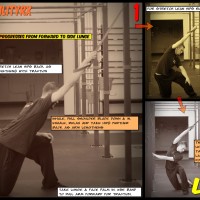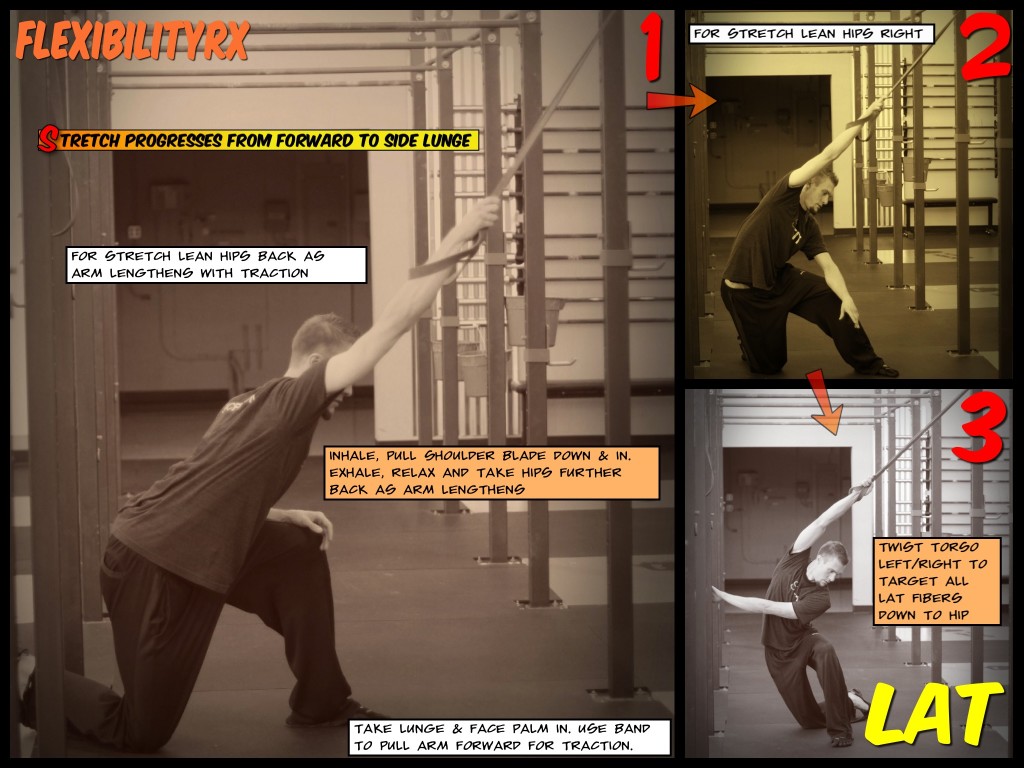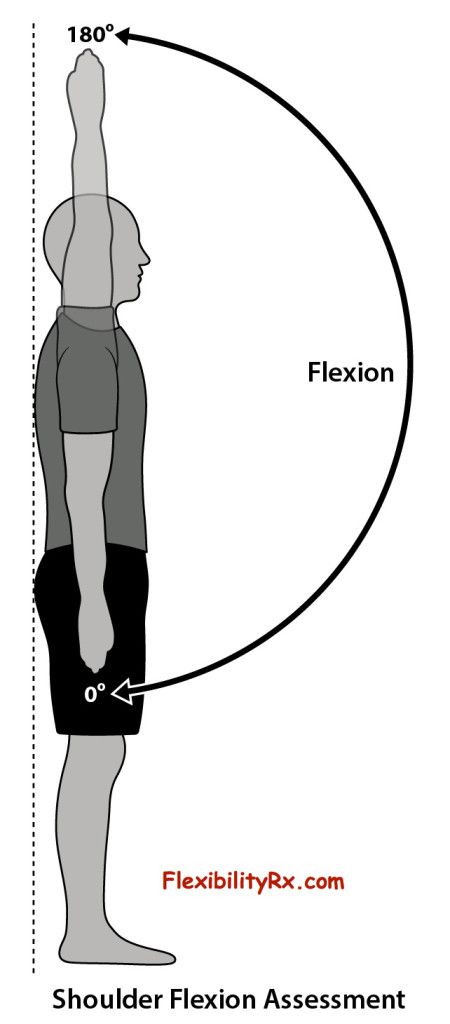
Improving Shoulder Flexion for Overhead Lifts
Here’s a quick assessment and corrective exercise for tight shoulders that may be limiting overhead range of motion. The assessment allows you to see if you have enough shoulder flexion for pullups, presses, and overhead movements. After taking the assessment – if your range of motion is limited perform the following lat stretch before reassessing your range of motion.
To perform the following assessment stand with your back against the wall. First note if your low back is in contact with the wall. If your hips are tilted forward (anterior pelvic tilt) and low back arched (allowing space) – tuck your hips and flatten your low back for the exercise.
Also note if the back of your head is touching the wall and the ease with which your thoracic spine and ribcage are able to maintain this position. Good anterior core stability is needed for a neutral pelvic and low back position. Thoracic extension is also required for a stable shoulder blade position to allow for good arm movement.
Slowly raise one arm upward overhead with the palm facing in and the elbow extended. Note your ability to touch the wall with your arm keeping the elbow extended and low back flat against the wall.
If you are unable to touch the wall, you have limited shoulder range of motion that may be caused by tight lats.
The following stretch releases the broadest muscle of the back – the lattisimus dorsi. The lats span (on each side) from the hips, to the low back, out to the shoulder blade. Tight lats can take the hips into an anterior pelvic tilt and produce hyperextension of the low back. After performing the stretch you can also note your hip and low back position in addition to your shoulder range of motion.
Targeting the Different Lat Fibers
The lat stretch has three positions: a forward lunge that targets the upper lat fibers (by the scapula), a side lunge that targets the lower lat fibers (by the hip), and in-between position that targets the middle fibers. The motion for the stretch will come from the hips as the band tractions the shoulder (decompressing the shoulder joint).
PNF Cue
PNF involves a 3-5 second contraction (on the inhale) followed by a relaxation (on the exhale) into a deeper range of motion. For the forward lunge the contraction will come from the shoulder blade – as you pull the scapula down the back. Inhale and hold the shoulder blade down, then exhale and take the hips back as you reach out with the arm. From the side lunge position you will pull the ribcage down to the hips, before exhaling and taking the hips out to the side as the arm reaches over.
After performing the lat stretch reassess your shoulder flexion – you will find that it is easier to get your arms overhead and maintain a neutral low back position. Strength the new range after stretching with overhead lifts.
– Kevin Kula, “The Flexibility Coach” – Creator of FlexibilityRx™ – www.FlexibilityRx.com
Tags: flexibility assessment, lat stretch, overhead range of motion, shoulder flexion, tight shoulders


Leave A Reply (No comments so far)
You must be logged in to post a comment.
No comments yet